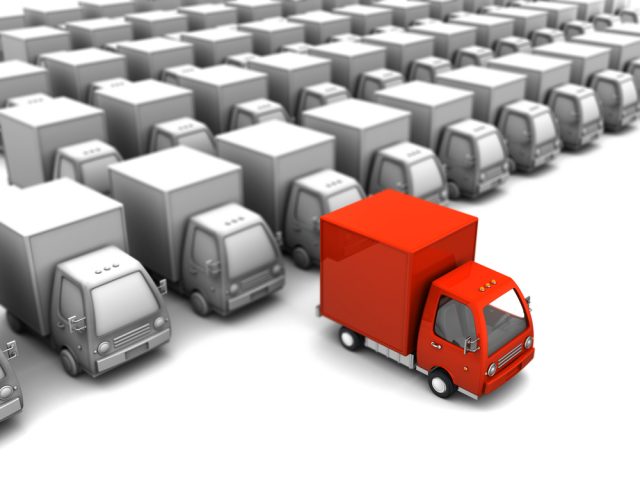Why companies must act now to reduce the cost of delivery

Seventy-one percent of logistics companies in the U.K. saw an increase in transportation costs in the first quarter of 2022 when compared to the same period in 2021. Forty percent of companies surveyed reported that the costs had risen by nearly 25 percent.
Enterprises are battling rising shipping costs in a hyper competitive market with an eye on providing end users with top-class consumer experiences. It’s a balancing act that leaves companies walking on a tightrope, trying to juggle between cost and consumer expectations.
So, what’s fueled this rise in delivery cost? There are two clear answers:
Labor Shortages
The number of heavy goods vehicles (HGV) drivers fell by 30,300 at the start of 2022. With demand for skilled workers outpacing supply, truck driver salaries have surged. According to a Logistics U.K. report, HGV driver pay has surged by nearly 12 percent, while advertised salaries increased by more than a fifth (21 percent) in the year to Q4 2021.
Hiring and retaining drivers has become expensive and has added to the cost of delivery. And the problem doesn’t end with truck drivers. The U.K. is facing a massive shortage of forklift drivers, warehouse staff, technicians and transport managers.
Energy Crisis
The energy crisis in Europe has led to soaring fuel prices in the U.K. Moving goods between places has become costlier. The sharp rise in fuel costs has impacted every stage of the supply chain process. Whether it’s moving goods via shipping containers from one port to another or last-mile deliveries -- skyrocketing fuel costs have had a knock-on effect on the delivery rates.
In fact, the last mile is the most costly part of the supply chain. It accounts for 53 percent of the overall shipping cost. Propelled by workforce shortages and fuel prices, last-mile delivery costs have shot up considerably.
What can enterprises do to reduce last-mile delivery costs?
By buckling down on last-mile optimization, enterprises can reduce costs. And there's no better way to fine-tune last mile operations than embracing modern technologies. Companies can use technology to dramatically simplify complex last-mile logistics processes and make them more cost-efficient and customer-centric.
Reduce Fuel Costs With Route Optimization
With route optimization, enterprises can take advantage of artificial intelligence (AI) and machine learning (ML) technologies to plan the best routes for their delivery vehicles - reducing empty miles and fuel costs. Route optimization technology improves on-time deliveries and increases first-attempt delivery rates, leading to a reduction in costs involved in making multiple delivery attempts, storage of parcels, and handling of the delivery personnel.
AI and ML also help organizations accurately predict consumer demand and do effective capacity planning, thereby reducing unnecessary wastage of energy and resources.
Get Cost-Efficient With Enhanced Real-Time Visibility
When enterprises invest in improving visibility in the last mile, they become better equipped at identifying gaps in their operations. By plugging those gaps and increasing efficiency, companies take a step towards greater productivity and minimization of costs.
More visibility gives enterprises more control over their last mile operations. Real-time availability of shipment information can be communicated to the end consumer resulting in a better delivery experience.
Providing real-time visibility to consumers can help enterprises reduce 'Where Is My Order' or WISMO calls to customer service centers, saving time and reducing costs for the company.
Enhanced last-mile visibility also helps enterprises keep tabs on driver productivity. By proactively monitoring drivers, enterprises can reduce turnaround times and build a more cost-effective last-mile process.
Efficient Carrier Allocation
Modern technologies can vastly improve operational efficiency by allocating carriers based on shipment data like the place of delivery, package volume, time of delivery, and other variables. This ensures that only the best carriers are selected at the best rates, leading to a lowering of costs.
Predictive Analytics
Companies can make data-driven decisions using predictive analytics tools and manage their last mile operations expertly. By analyzing historical data, companies can accurately forecast future deliveries and conduct better demand planning and inventory management, which ultimately helps in making last-mile deliveries more cost-efficient.
Predictive analytics enables companies to sharply focus on the products that meet their customer's needs and provides insight into new product categories, thus becoming an engine for growth even during tough economic times.
In Conclusion
If companies want to ride through the current unfavorable economic climate, they must focus on reducing cost of delivery. Strategic investments in last-mile technology can help enterprises manage consumer expectations and keep last-mile delivery costs in check.
Image Credit: Mmaxer / Shutterstock
Danny Hudson is Director of UK & Europe at FarEye.
